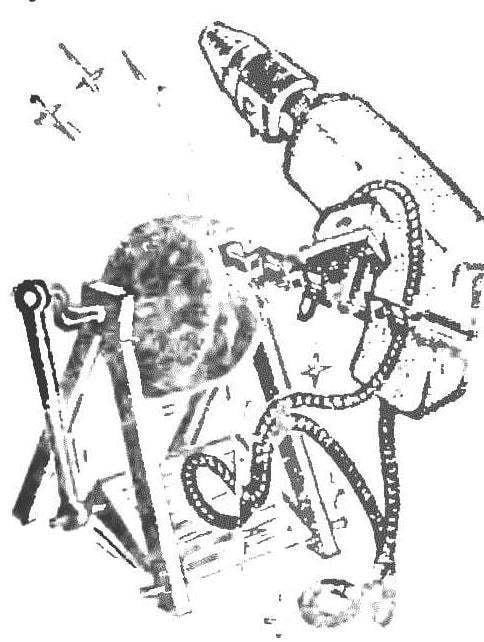
What a handyman can do without a drill? With a set of simple devices it is possible to perform various processing operations materials. But most drill, of course. is used for its intended purpose — to drill holes. How well and quickly you manage to do that, depends on proper sharpening tool. Included in the kit for drilling machine grinding device for sharpening drill bits which is very nice while holding the drill on weight, is not easy to correctly sharpen cutting edges, strictly maintaining their symmetry and the required angle at the vertex. And with this console (see picture). this task and the novice master.
Housing adaptations — steel thick-walled pipe with an outer d of 60 mm, length 125 and a wall thickness of 5 mm. Mounting ring, which serves for mounting the housing on boarding the neck of the drill has an outer d of 50 mm, inner diameter of the neck and height 20 mm Top cap serves as a jig for sharpening drill bits which is inserted into the appropriate size hole. The most difficult to manufacture part — grinding head. Small cylindrical abrasive wheel, a fixed nut on a steel mandrel, clamped in the Chuck of the lathe and a special tool attached to its outer end a conical shape. The angle at the vertex will determine the sharpening of drills, so choose it depending on the material intended for processing. For drilling cast iron best angle — 118°, soft low — carbon steels- 130°, aluminum alloy 140°, for plastics and wood – 90*. If to produce such a grinding head is not possible, change the design: use cylindrical abrasive wheel, and cover the conductor console at the required angle, run the holes.

